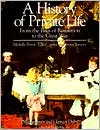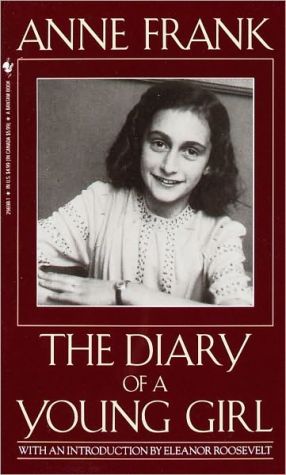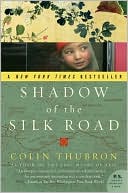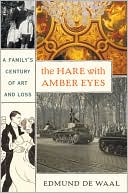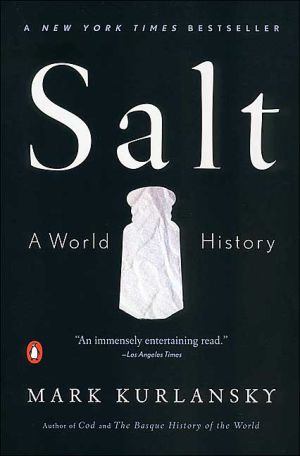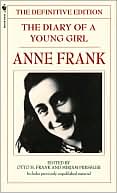A History of Private Life, Volume IV: From the Fires of Revolution to the Great War
The 19th century was the golden age of private life, a time when supreme individual and existential values emerged. The fourth book in this popular series, written for the cultivated reader, chronicles this development from the tumult of the French Revolution to the outbreak of World War I.\ \ The final volume in the award-winning series charts the remarkable inner history of our times from the tumult of World War I to the present day, when personal identity was...
Search in google:
The 19th century was the golden age of private life, a time when supreme individual and existential values emerged. The fourth book in this popular series, written for the cultivated reader, chronicles this development from the tumult of the French Revolution to the outbreak of World War I. Publishers Weekly People of the Middle Ages were suspicious of solitude. Feudal dwellings were promiscuously crowded, monastery layouts reflected a fear of isolation. Yet, the idea of privacy, linked to an inner life, stubbornly took root. Intimacy found expression in peasant hearths, in orchards where lovers embraced, in noble households with their areas for retreat, in towers and fortresses that gave ordinary people a refuge from the havoc of war. The private sphere spilled out into the neighborhood. Moving from the anonymous 11th century to the stirrings of Renaissance individualism, this second volume of essays in a projected five-volume opus is a marvelous re-creation of history as it was actually lived, an archeological excavation of daily life few historians have attempted. Hundreds of apt illustrations complement discussions of bedroom design, table manners, discovery of the body, customs. The growing importance of the individual is traced through fables, romances, poems and a new realism in painting. The contributors are French scholars; Duby is a professor at the College de France. History Book Club alternate. (March)
Introductionby Michelle Perrot1. The Curtain Risesby Lynn Hunt, Catherine HallIntroductionby Michelle PerrotThe Unstable Boundaries of the French RevolutionThe Sweet Delights of Home2. The Actorsby Michelle Perrot, Anne Martin-FugierIntroductionby Michelle PerrotThe Family TriumphantRoles and CharactersBourgeois Rituals3. Scenes and Placesby Michelle Perrot, Roger-Henri GuerrandAt HomePrivate Spaces4. Backstageby Alain CorbinIntroductionby Michelle PerrotThe Secret of the IndividualIntimate RelationsCries and WhispersConclusionby Michelle PerrotNotesBibliographyCreditsIndex
\ Publishers Weekly - Publisher's Weekly\ People of the Middle Ages were suspicious of solitude. Feudal dwellings were promiscuously crowded, monastery layouts reflected a fear of isolation. Yet, the idea of privacy, linked to an inner life, stubbornly took root. Intimacy found expression in peasant hearths, in orchards where lovers embraced, in noble households with their areas for retreat, in towers and fortresses that gave ordinary people a refuge from the havoc of war. The private sphere spilled out into the neighborhood. Moving from the anonymous 11th century to the stirrings of Renaissance individualism, this second volume of essays in a projected five-volume opus is a marvelous re-creation of history as it was actually lived, an archeological excavation of daily life few historians have attempted. Hundreds of apt illustrations complement discussions of bedroom design, table manners, discovery of the body, customs. The growing importance of the individual is traced through fables, romances, poems and a new realism in painting. The contributors are French scholars; Duby is a professor at the College de France. History Book Club alternate. (March)\ \ \ \ \ Library JournalSpanning the period from the 11th century to the Renaissance and focusing on France and Tuscan Italy, this continues the projected five-volume history of private life from the Roman world to the present. ``Private'' is here defined as what medieval people considered intimate, familial, domestic. The five chapters, three of them written all or in part by distinguished French scholar Duby, display an astounding knowledge and use of sources and offer rich detail about everything from affection and sex to domestic arrangements and latrines. The many illustrations strongly support the text. Essential for both research and general collections.Bennett D. Hill, St. Anselm's Abbey, Washington, D.C.\ \ \ Library JournalThese volumes, edited by Philippe Aries and Georges Duby, are aimed at both the scholar and layperson who wonder how people lived and behaved from ancient times to the present: "their thoughts, their feelings, their bodies, their attitudes, their habits and habitations, their codes, their marks, and their signs." The focus is on western European life, primarily French. Copyright 1999 Cahners Business Information.\ \ \ \ \ Joseph CoatesThe fourth volume of this brilliant series arrives with the poignance of a letter that through some fluke of the postal system has been delayed 70 or 100 years and is read by descendants of the original addressee…A whole centuries' cries and murmurs are here, reminding us that their echoes are with us still.\ —Chicago Tribune\ \ \ \ \ Richard SennettEvocatively written, well translated and beautifully illustrated.\ —New York Newsday\ \ \ \ \ Roger ShattuckThe new emphasis on the history of everybody has now been consecrated in [this] ambitious five-volume series…masterfully translated by Arthur Goldhammer…Copious illustrative material-paintings, drawings, caricatures, and photographs, all cannily chosen and wittily captioned to display domestic life…Magnificent.\ —New York Times Book Review\ \ \ \ \ Chicago TribuneThe fourth volume of this brilliant series arrives with the poignance of a letter that through some fluke of the postal system has been delayed 70 or 100 years and is read by descendants of the original addressee...A whole century's cries and murmurs are here, reminding us that their echoes are with us still.\ — Joseph Coates\ \ \ \ \ \ ChoiceGeneral readers as well as academic specialists will revel in the wealth of historical detail and insight offered here. Aries saw three basic forces contributing to the profound social changes of the early modern era: the rise of state power, the spread of literacy, and new forms of religious piety. Together, the essays address each of these realms from several angles, providing glimpses at everything from cookbooks to charivaris, love letters to lettres decachet. The pattern that emerges is the creation of a sphere of private life, thought, and feeling that was unknown in the Middle Ages.\ \ \ \ \ \ New York NewsdayEvocatively written, well translated and beautifully illustrated.\ — Richard Sennett\ \ \ \ \ \ New York Review of BooksWhat gives the volume its unity is not so much a rigorous definition of the subject, private life, as a consistency of concentration on a series of very interesting, interrelated themes: living space, and the degree of privacy that it can afford; family relationships, with special references to the nucleargroup that centers around a single married couple; relations between the sexes (both amorous and domestic); attitudes toward the body and nudity; the senseof individuality and self-perception...This volume offers a very full, richly variegated picture of the life, in different places and at different periods, of the Middle Ages. It has lavish and well-chosen illustrations to match the text.\ \ \ \ \ \ New York Times Book ReviewThe new emphasis on the history of everybody has now been consecrated in [this] ambitious five-volume series...masterfully translated by Arthur Goldhammer...Copious illustrative materials—paintings, drawings, caricatures, and photographs, all cannily chosen and wittily captioned to display domestic life...Magnificent.\ — Roger Shattuck\ \ \
